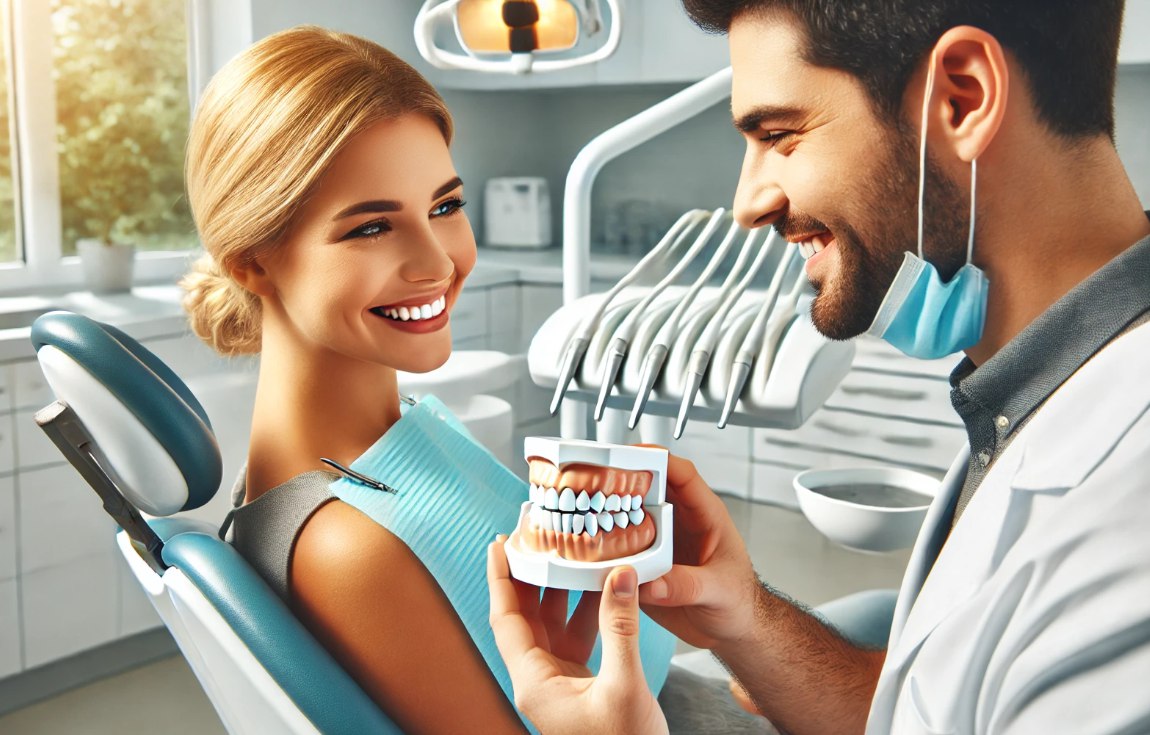
If you’ve ever wondered what happens to your teeth after veneers removed, you’re not alone. Many people are curious about how their teeth look and feel once veneers come off. It’s a natural question, especially if you’re thinking about getting veneers or already have them.
Whether you’re removing veneers for a fresh look or to address a dental concern, it’s always a good idea to ask questions and know what to expect. Taking care of your teeth afterward will help keep your smile healthy and confident.
What Are Veneers?
Veneers are thin shells made mainly from porcelain or composite resin, designed to cover the front of your teeth. Veneers are used to improve the look of teeth with cracks or uneven shapes. Many people treat badly stained teeth with veneers. They are custom-made and bonded to your teeth, giving them a natural, smooth appearance.
People choose veneers to create a brighter, more even smile. They can hide imperfections while still looking like real teeth. Veneers are a popular option because they are durable and can last many years with proper care. If you’re considering veneers, talk to your dentist to see if they’re right for you.
Types of Veneers
When considering veneers, it’s helpful to know the types of veneers available. Each type offers different benefits, depending on your needs and preferences. Here are the main options:
- Porcelain Veneers: Made from durable porcelain, these are natural-looking, stain-resistant, and long-lasting. They require some enamel removal.
- Composite Veneers: Crafted from tooth-colored resin, these are less expensive and quicker to apply but not as durable.
- Lumineers: A thinner type of porcelain veneer that usually requires little to no enamel removal.
- Temporary Veneers: Used as a short-term option while waiting for permanent veneers, these are less durable and removable.
Reversibility of Veneers
The reversibility of veneers depends on the type you choose. Traditional veneers usually require removing a thin layer of enamel from your teeth. This makes the process permanent because the enamel cannot grow back.
However, some types, like Lumineers, don’t require enamel removal. These veneers are more reversible if you ever decide to remove them. It’s important to talk to your dentist about your options and what happens if you no longer want veneers in the future. Understanding this can help you feel confident in your choice.
The Veneer Removal Process
The veneer removal process is carefully done by a dentist to protect your natural teeth. First, the dentist gently loosens the veneers using special tools. They may need to buff or file the adhesive holding them in place.
If enamel was removed during placement, your teeth might feel sensitive once the veneers come off. In most cases, the dentist will discuss replacing the veneers or other options to protect your teeth. It’s a delicate process, so choosing an experienced dentist is key to ensuring your teeth stay healthy.
What to Expect?
- Your teeth might feel sensitive after removing composite veneers, especially to hot or cold foods.
- The surface of your teeth may look slightly rough or uneven where enamel was removed.
- You could notice a difference in the color or texture of your natural teeth.
- The dentist might suggest replacing the veneers or using other treatments to protect your teeth.
- Regular dental care, like brushing and flossing, will be important to keep your teeth healthy.
- Your smile may feel or look different, but your dentist can guide you on next steps.
Expert Tips to Follow After Veneer Removal

After removing veneers, taking proper care of your teeth is essential to keep them healthy and comfortable. Following these simple tips can help protect your teeth and reduce sensitivity during the adjustment period:
- Brush your teeth gently twice a day to protect them and reduce sensitivity.
- Use a toothbrush for sensitive teeth to ease any discomfort you may feel.
- Avoid extremely hot or cold foods and drinks to prevent added sensitivity after veneer removal.
- Talk to your dentist about fluoride treatments or products to strengthen and protect your teeth.
- Floss daily to keep your teeth and gums clean and healthy.
- Schedule regular dental check-ups to monitor your teeth and address any concerns promptly.
- Consider your dentist’s recommendations for replacing veneers or other treatments to maintain your smile.
Conclusion
Understanding what happens to your teeth after veneers removed is essential for making informed decisions about your dental health. Veneers can transform your smile, but knowing how to care for your teeth after removal is just as important. From protecting sensitive teeth to exploring replacement options, your dentist will guide you every step of the way.
At Smile Makeover of LA, we are dedicated to helping you achieve and maintain a healthy, confident smile. Our team of experts in Glendale, CA, is here to answer all your questions about veneers and provide personalized care tailored to your needs.
If you’re considering porcelain veneers, thinking about removal, or just want to explore your options, don’t wait—contact us today! Schedule an appointment and let us help you keep your smile beautiful and healthy for years to come.
FAQs
Can you go back to normal teeth after veneers?Can you go back to normal teeth after veneers?
